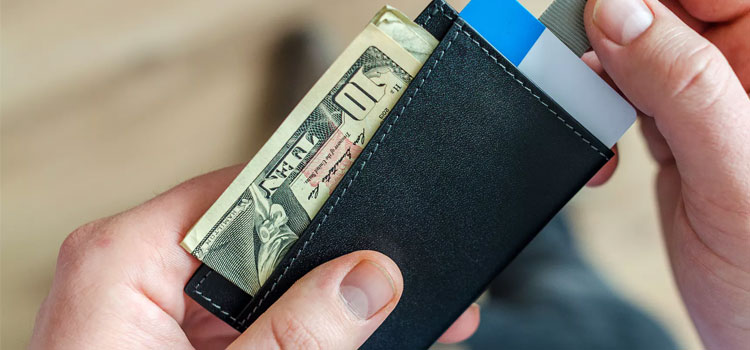The internet is an amazing space where you can earn money (in either cash or gift cards) by doing the simplest to the weirdest of things and free Google Play credit is no exception.
Did you know that you can earn free gift cards simply by downloading some apps?
You can even single out Amazon gift cards specifically and save as many gift cards your heart desires for your annual Christmas online shopping.
If you’re interested in earning free Google Play credit to pay for a movie, music, books, premium apps, or Google products, you can do it without paying a cent.
Even buying lives for Candy Crush, or any other in-app purchases of third-party apps can be bought using Google Play credits.
11 Ways to Get Free Google Play Credit
1. Google Opinion Rewards
The official way of earning free Google Play credits is by downloading Google Opinion Rewards.

Developed by Google, the Google Opinion Rewards is a rewards-based program initially launched as a survey app for Android and iOS. It is available for download in 22 countries, including the US, UK, some parts of Europe and Asia (Check if your area is allowed – there’s a full list here).
The idea behind this involves users answering surveys and earning rewards.
Android-based users can earn Google Play credits and redeem them by buying paid apps on the Google Play Store.
Meanwhile, iOS-based users receive actual payment via PayPal.

Google says these surveys help other companies improve their services and products by letting regular people like you and I share our opinions.
You won’t get rich answering these surveys, since they pay somewhere from a couple of cents to $1 for every survey fulfilled.
The Google Opinion Rewards app is available either at the Play Store or Apple Store.
Aside from Google’s own survey app, you can also check out these other methods (a mix of websites and apps) that would allow you to earn free Google Play credits:
2. GPlayReward
This get-paid-to website lets anyone earn free Google Play gift cards by downloading apps, or completing simple tasks such as watching a video, checking out ads, or browsing the site for bonuses.
These tasks are rewarded with points, which you can use to redeem $10, $25 or $50 Google play gift cards.
You’ll need 1,000 points to exchange it for $10 Google Play gift card.
3. AppNana
AppNana is available for both iPhone and Android users.
With the app, you can earn “nanas” (points) for playing featured games or downloading apps.
Every time you download a featured app, you earn points that you can redeem as Amazon, Xbox, iTunes or Google Play gift cards.
Heck, you don’t even need to do something to earn points here. AppNana gives 400 points daily, if you log into your account each day.
You receive 10,000 nanas once you register.
It would take you a while since $10 Google Play gift card is equal to about 160,000 nanas.
4. InstaGC
Short for “Instant Gift Cards,” InstaGC gives you plenty of tasks to do to earn points, including completing surveys, shopping online, browsing the web, watching videos, visiting sponsor sites, listening to music, or even joining product trials.
100 points convert to $1 in gift cards.
As an example, you get to earn 10 points for signing up and 110 points for referring a friend. Google Play gift cards are available in $10 (1,000 points), $15 (1,500 points) and $25 (2500 points).
5. FreeMyApps
FreeMyApps is an app that rewards you for referring friends to download and join. watching YouTube videos, joining social media contests, playing games, and more.
This app has paid out over $27 million worth of gift cards, so you’re guaranteed to be “paid.”
Aside from Google Play credits, you can also exchange your points to Amazon, CVS and in-app purchases, and so on. There are plenty of gift card options once you decide to payout. And if you’ve got change, you can even donate to charity straight off the app.
6. Gift Card Granny
Gift Card Granny is a cashback website, which is also available as an app for iOs and Android devices.
You need to register to access contests, giveaways, and other activities that will lead you to earning rewards points.
Once you’ve saved enough points, you can exchange these for Google Play store credits and other types of gift cards.
7. Gift Box
Gift Box is an app that pushes advertisements to your device, then gives your points once you view the ads.
You can also perform other tasks like watching sponsored videos, downloading third-party apps, referring friends, playing online games, and so on.
You’ll need a minimum of 1,500 coins to be able to redeem them as gift cards.
Note that 500 coins is equivalent to $1.
8. FeaturePoints
FeaturePoints boasts of rewarding over $5,600,000 since 2012.
It is available at the App Store and Google Play store.
With FeaturePoints, you are rewarded with points if you play games, read books, listen to music, download featured apps, watch videos, and other tasks.
The minimum payout should be at least $10 to $15. You can exchange your points into Google Play credits, online gift cards or paid apps.
Probably the coolest thing about FeaturePoints is their unique referral system. Whenever you refer a friend over, you earn 50% of the total points he/she earns as well.
9. Survey Junkie
This site has been around since 2005 and is one of the most trusted survey sites.
With a user-friendly system and a whopping 3 million users, you’ll quickly see how easy it is to earn credits here. Plus, it’s available on site and both as iOs or Google Play app.
Just register at Survey Junkie and you can begin answering surveys or joining focus groups in exchange for points. You’d have to earn at least 1,000 (equals $10) before you can exchange it to cash via PayPal, e-Giftcards like Google Play or direct bank transfers.
10. Swagbucks
With Swagbucks, you can earn points from various tasks, such as completing surveys, using specific search engines, trying out a shopping site, viewing sponsored ads, watching videos, playing games, and more.
Get $5 once you open an account.
You’ll need 1,000 Swagbucks points to receive a $10 Google Play gift card or other e-gift cards.
Swagbucks sometimes host sales, so make sure to check it out regularly.
11. PrizeRebel
PrizeRebel boasts of a massive list of rewards, from Amazon gift cards to Google Play gift codes, and everything in between.
There are even game-specific credits, such as “Clash of Clans” rewards.
PrizeRebel keeps answering surveys simple – it takes surveys from nine different survey networks, so you wouldn’t have to log into all of them daily. You can earn points from various other tasks like signing up for offers, referring friends, playing games, watching videos, and more.
Like FeaturePoints, PrizeRebel gives you 20% of all the points your referred friends earn for life, so spreading this site lets you earn points quicker. Once you saved up 1,000 points, you can exchange it for $10 Google Play gift code.
Register Your Gadgets for Free Google Play Credits
Maybe you wouldn’t need to answer surveys, download apps, or any other online tasks.
If you just need a one-time deal on Google Play credits, then registering your gadgets could be your solution.
- Chromecast – If you have a Chromecast device, you’ll have to install it on your Android device, which will then prompt current offers. Most of the time, you can earn somewhere from $6 and $20. Double your earnings by registering two or more devices.
- Samsung – Those who have a Samsung phone can easily register their device online, activate the device, then check your credit. If you’re lucky, you can get a free $25 Google Play credit right off the bat. If not, don’t worry, some people report receiving credits via e-mail.
Once you have your Google Play codes ready, you have to visit play.google.com and find the app you want to purchase. Just “but” and hit continue up to the payment method (FYI, you’d have to choose “Google Play” when choosing from the options.)
A Warning about Free Google Play Code Scams
You see how easy it is to receive Free Google Play codes, right?
Well, some bad guys take advantage of this by offering a “credit generator” for a small fee.
Unfortunately, none of these Google Play credit tools will work to generate you credits.
Others won’t require payment, but they might attack your PC or device with a virus. Others would phish you via email, then wait for you to share passwords, bank accounts, and other personal details. Getting Google Play credits this way definitely isn’t worth the risk.
Now if you think Google Play credits have very little value and you’d rather earn real money via Google, you have to check out this guide I wrote on how to make money online with Google.















